
The Puerto Rican Amazon is a critically endangered parrot species that is uniquely endemic to the island. This species is known for its stunning red and blue feathers and its monogamous mating habits. Unfortunately, due to deforestation and human activity, the Puerto Rican Amazon has become severely threatened with extinction. In recent years, there have been ongoing conservation efforts to protect the species and increase the population. In this article, we will explore the origin and characteristics of the Puerto Rican Amazon, the threats to its survival, and the various conservation efforts that are working to protect the species and ensure its continued existence in the wild.
The Origin and Characteristics of Puerto Rican Amazon
Origin of the Parrots in the Wild
The Puerto Rican Amazon, also known Puerto Rican Parrot, is a parrot species that is native to the island of Puerto Rico and is known scientifically as Amazona vittata. These birds are believed to have originated in the wild over 100,000 years ago, and today they are the only remaining native parrot species in Puerto Rico.

Physical and Behavioral Characteristics
The Puerto Rican Amazon has a distinctive red forehead, green feathers, and white rings around the eyes. They are medium-sized parrots that can grow up to 12 inches in length and have a wingspan of up to 30 inches. Puerto Rican Amazons are monogamous and mate for life, as both parents play an active role in raising their offspring. They are cavity nesters, which means they build their nests inside tree hollows.
In terms of behavior, Puerto Rican Amazons are social birds that typically travel in small groups. They feed on a varied diet of fruits, flowers, leaves, bark, and nectar obtained from the forest canopy. They use their powerful beaks to crack open nuts and consume their food. The Puerto Rican Amazon is considered a highly intelligent species and is known to mimic human speech. Puerto Rican Amazon is a unique and intelligent bird species that holds great cultural and ecological significance.
Habitat and Food Sources of the Puerto Rican Amazon
The Forest and Canopy in the Habitat
The Puerto Rican Amazon is found in the tropical rainforests of Puerto Rico, an island located in the Caribbean. These parrots tend to inhabit the lower canopy of the forests and are sometimes seen in the middle canopy. The canopy provides a habitat with a wide range of microhabitats for the parrots, allowing them to find suitable nesting sites. The forest canopy also provides ample shelter and protection from predators for the parrots.

Biodiversity of Food Sources in the Habitat
The Puerto Rican Amazon feeds on a wide variety of fruits, seeds, bark and nectar obtained from various tree species in the forest canopy. Piptocarpha tetrantha, a rare tree species only found in Puerto Rico, is one of the important food sources for the Amazon parrots. Its small white flowers provide a rich nectar source for the birds during the dry season. The birds are also known to consume fruits from the Gumbo-Limbo or West Indian Birch tree, which is widely distributed throughout the island.
Moreover, wild almond trees, West Indian mahogany, and some palm trees also provide nourishing food for the parrots. In addition to these food sources, Puerto Rican Amazons have also been observed feeding on the flowers of the Flamboyant or Flame tree, and the Terminalia Catappa or Sea Almond tree. The birds use their strong beaks to crack open nuts and seeds, which they consume. These varied food sources provide the necessary nutrients for the birds to thrive and retain their colorful plumage.
The biodiversity of food sources in the habitat is one of the reasons the Puerto Rican Amazon has been able to survive in the wild for so long. However, deforestation and human activity have severely impacted their habitat and is one of the major threats to their survival.
Threats to the Survival of Puerto Rican Amazon
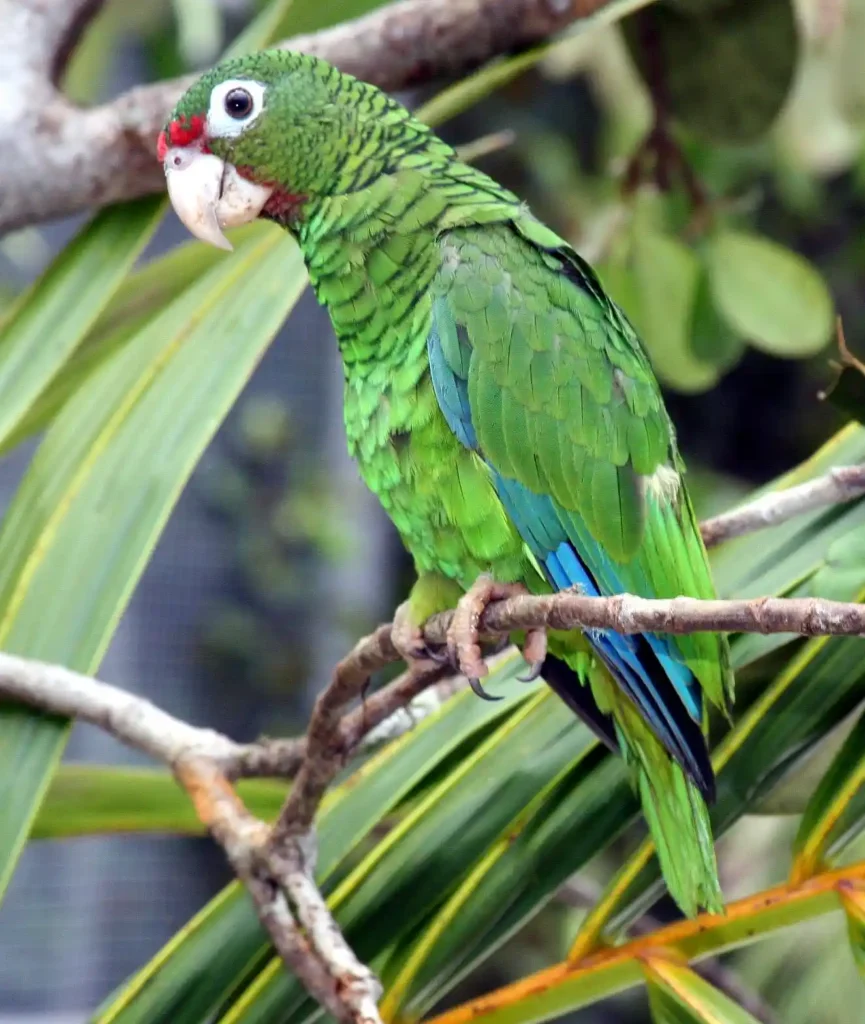
Human Activities and Encroachment
The Puerto Rican Amazon is facing numerous threats due to human activities and encroachment. The rampant deforestation in Puerto Rico has resulted in the loss of its natural habitat, which is the primary concern for the survival of the species. Urban development, illegal logging, and land clearing for agriculture purposes are also considerable threats for the forest where these parrots live and thrive.
These activities have left these birds with nowhere to live and breed, which has resulted in a decrease in the population of the species. It has been observed that the primary cause of declining populations is habitat loss, the fragmentation of habitat and degradation of the remaining habitats. This loss of habitat is the most significant factor of population decline and puts these birds at risk of extinction.
Threat of Exotic Species
Another significant threat to the survival of the Puerto Rican Amazon is the introduction of exotic species, which has lead to habitat loss and competition for food sources. These invasive species kill and compete with the endemic species, affecting their overall survival. The Brazilian Pepper tree, for instance, competes for sun, nutrients and water and is highly invasive and difficult to eradicate. It has become one of the most serious threats to the wild Puerto Rican Amazon.
Natural Disasters
The habitat of Puerto Rican Amazon is also vulnerable to natural disasters such as hurricanes, landslides, and floods. The frequency and intensity of these natural disasters have increased due to climate change, causing significant destruction and loss of habitat for the species. Hurricane Maria in 2017 caused the loss of their nesting sites, food sources, and roosting habitats, which led to the loss of a significant proportion of the population. Invasive species and disease exacerbated the loss.
The recovery of these populations is vulnerable to storms, disease and other unexpected events. The population dynamics of the species are still influenced by previous storms and hurricanes.
Conservation Efforts for Puerto Rican Amazon
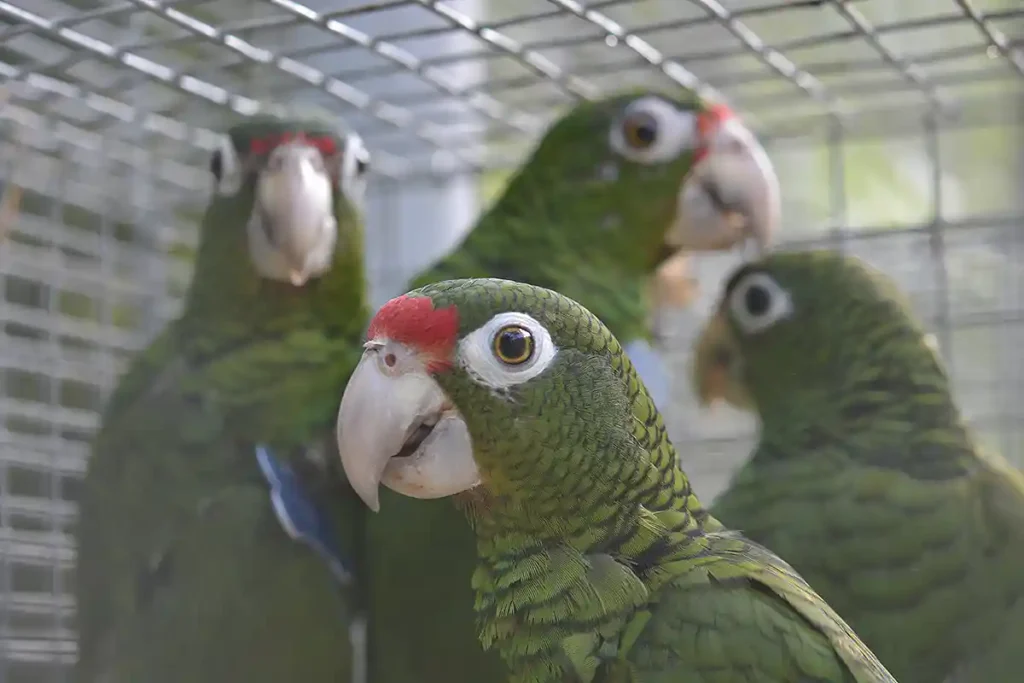
Protection and Management of the Habitat
The Puerto Rican Amazon’s habitat is essential for its survival, and the conservation efforts focus on protecting and managing it. The Luquillo Experimental Forest, Rio Abajo State Forest, and Maricao State Forest are the primary habitats for the parrots. The US Fish and Wildlife Service, in partnership with local organizations, has implemented measures to ensure the habitat’s protection and management. The measures include:
- Preventing further destruction of critical habitat
- Restoring damaged habitat
- Controlling invasive species
The conservationists are also working with landowners to develop conservation easements, which ensure the protection of habitats on private lands. The easements protect the land from development and encourage sustainable land use practices.
The Role of Government and Private Organizations

The recovery of the Puerto Rican Amazon is dependent on the efforts of government agencies and private organizations. The government has implemented policies and programs to conserve the species, including the formation of the Puerto Rican Parrot Recovery Program. The program focuses on executing recovery plans for the species, such as captive breeding and reintroduction. The success of the Puerto Rican Parrot Recovery Program has led to an increase in the parrot population.
Private organizations, such as the National Audubon Society and the Puerto Rican Parrot Conservation Trust, have also played a critical role in conservation efforts. They have supported research and provided funding for habitat protection and management, captive breeding programs, and public educational programs. Together, the government and private organizations continue to collaborate to develop and implement effective conservation strategies for the Puerto Rican Amazon.
The Significance of Puerto Rican Amazon in Wildlife
The Amazona Vittata in the Ecosystem
The Puerto Rican Amazon plays an important role in maintaining the ecosystem of the island. As a native species, it has developed over time to adapt to the island’s unique environment. The parrots play a crucial role in pollination as they feed on nectar from various tree species. They also disperse seeds of the fruits they eat, which helps in the regeneration and succession of the forest.
In addition, the Puerto Rican Amazon influences the behavior of other species in the ecosystem. Birds and animals that share the same habitat as the parrots interact with them, and this can alter their behavior patterns. For example, when the parrots are eating from a tree, other birds may wait their turn before eating from the same tree.
The Economic Value of the Parrots in Puerto Rico
The Puerto Rican Amazon is not only significant to the ecosystem but also has economic value in Puerto Rico. Tourism provides significant revenue to the island and the parrots, being a native species, attract many visitors to see them in the wild. The parrots have become a symbol of Puerto Rico, and their image is used in tourism and marketing campaigns to attract visitors.
Also, there is a market for captive parrots, and the Puerto Rican Amazon is popular among breeders. However, it is illegal to capture and trade in wild parrots, so captive breeding programs are the only legal way to obtain them. These breeding programs provide employment opportunities and generate income for the commercial sector. In conclusion, the Puerto Rican Amazon is essential to the ecosystem of the island, and also contributes to the economy of Puerto Rico. Protecting and conserving the parrots is not only a matter of preserving a native species, but also a smart economic investment for the future.
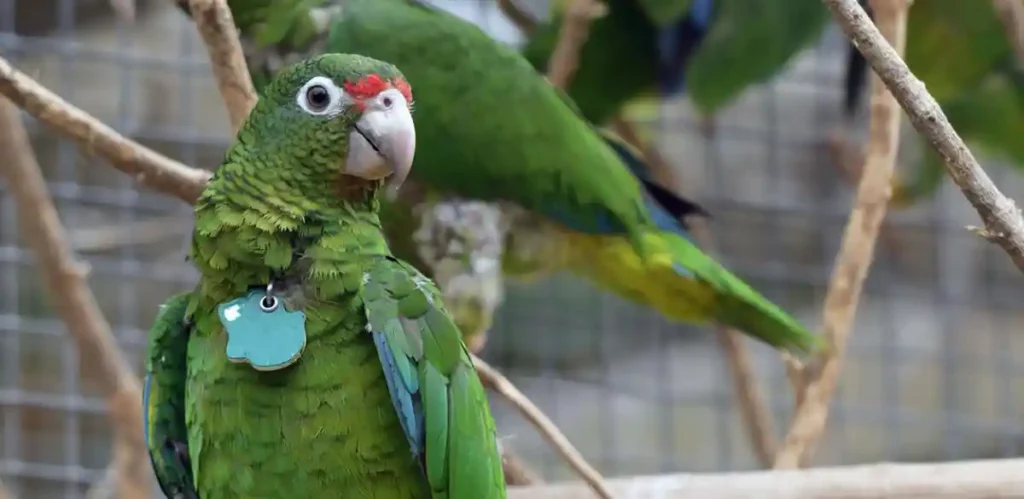
Successful Recovery of Puerto Rican Amazon Population
The Role of Luquillo Forest Aviary
The Luquillo Forest Aviary is a captive breeding facility that has been instrumental in the successful recovery of the Puerto Rican Amazon population. The aviary is located within the forest habitat of the parrots, providing a more natural environment that encourages breeding and survival of the species. The facility coordinates with other organizations to maintain the genetic diversity of the parrots in captivity and running a successful breeding program that has helped increase the population of the species.
The Advantages of the Aviary’s Program
The breeding program at the Luquillo Forest Aviary has several advantages that have led to its success. The parrots in the facility are raised with minimal human contact to ensure they develop naturally. They are provided with a diverse diet, including forage, to stimulate their senses and keep them healthy. The presence of other wild birds in the aviary gives the parrots opportunity to develop social skills and provides a more comprehensive education that would not be possible in human-led programs.
Goals of the Aviary’s Program
The primary goal of the Luquillo Forest Aviary is to increase the population of the Puerto Rican Amazon in the wild. The facility maintains an ongoing partnership with the United States Fish and Wildlife Service to reintroduce parrots into the wild. The ultimate aim is to create a sustainable population that maintains the genetic diversity of the species while conserving the forest habitat.
Reintroduction Programs on Mona Island
Mona Island, off the west coast of Puerto Rico, is one of the sites that have been chosen for the reintroduction of the Puerto Rican Amazon. The island is uninhabited, making it an ideal location for captive-bred parrots to be safely released into the wild. The program aims to establish a self-sustaining population of Puerto Rican Amazon on Mona Island.
The Reintroduction Process
The reintroduction process involves releasing the captive-bred birds into large aviaries on Mona Island, where they are acclimatized to their natural habitat. The aviaries have trees, vines, and water sources that mimic the surroundings of the natural habitat of the Puerto Rican Amazon. When the parrots are ready, they are released into the wild and closely monitored by biologists and conservationists.
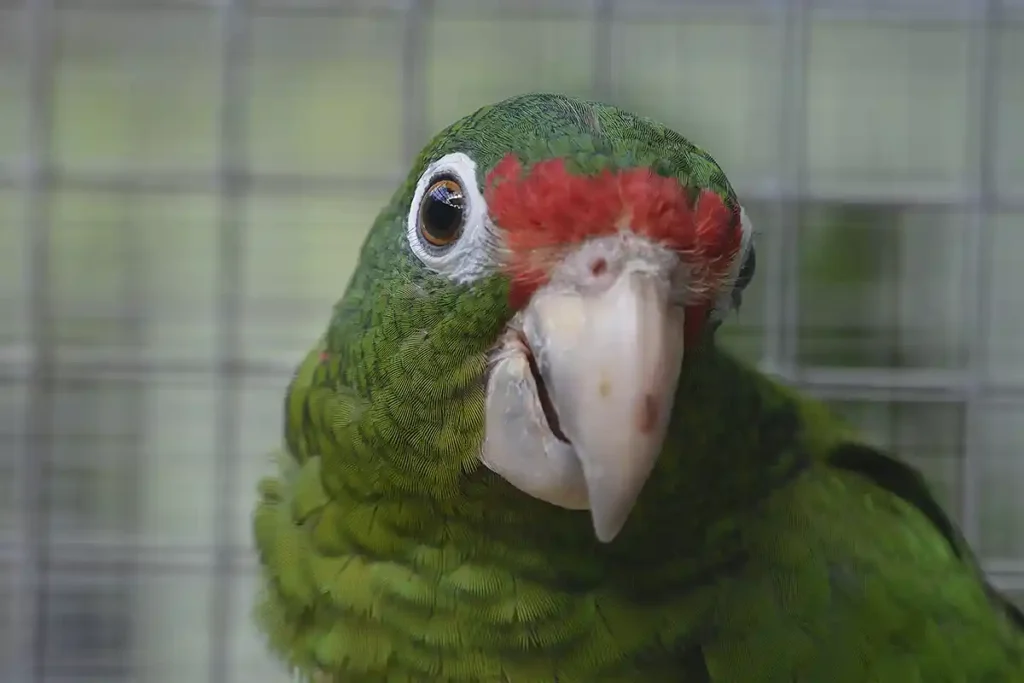
The importance of Reintroduction Programs
Reintroduction programs are vital for the survival and growth of Puerto Rican Amazon populations. They help create additional breeding sites in the wild and increase the genetic diversity of the parrots. With increasing populations in the wild, there is a higher chance for the Puerto Rican Amazon to recover from being critically endangered. The successful recovery of the Puerto Rican Amazon population is dependent on ongoing conservation and reintroduction efforts.
The Luquillo Forest Aviary and the reintroduction program on Mona Island are both vital in ensuring the survival of this critically endangered species. The continued implementation of these programs will help establish self-sustaining populations of the Puerto Rican Amazon in the wild and ensure that the species thrives for generations to come.
The Future of Puerto Rican Amazon
The Potential for Reaching Their Natural Numbers
Efforts to conserve and protect the Puerto Rican Amazon have been successful in increasing their population, but their numbers are still very low compared to their natural levels. One of the biggest challenges is the limited distribution of these parrots, which makes it difficult to recover their numbers. Conservation programs aim to increase their population by protecting their habitat, reducing human activity, and introducing these parrots to new locations. However, the effectiveness of these programs depends on their adequate funding and support.
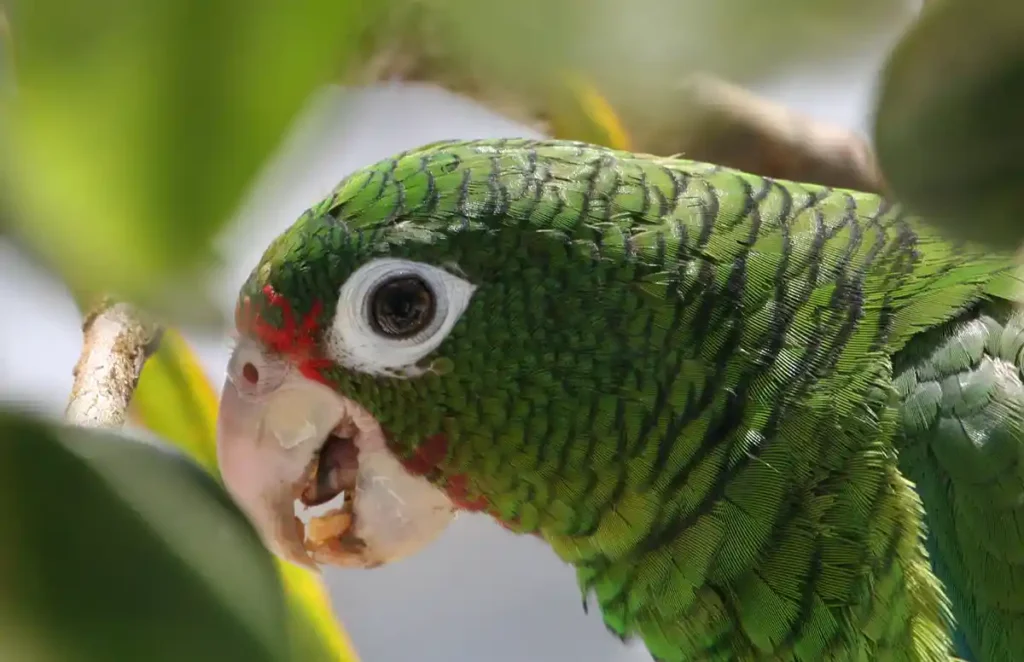
The Importance of Continued Conservation Efforts
The long-term survival and success of the Puerto Rican Amazon depend on continued conservation efforts. Protecting and expanding their habitat is necessary to ensure their population does not decline to critical levels again. Additionally, conservation efforts must include effective management of human activities, such as reducing deforestation and illegal hunting.
Collaborations between governments, non-profit organizations, and the local communities are essential for conservation efforts. These collaborations help raise awareness about the important role of the Puerto Rican Amazon in the ecosystem and economy of Puerto Rico. In conclusion, the future of the Puerto Rican Amazon depends on continued conservation efforts to protect this endangered species from natural disasters and human activity. To successfully restore their population to natural levels, conservation programs must be well-funded and supported by communities and governments.
